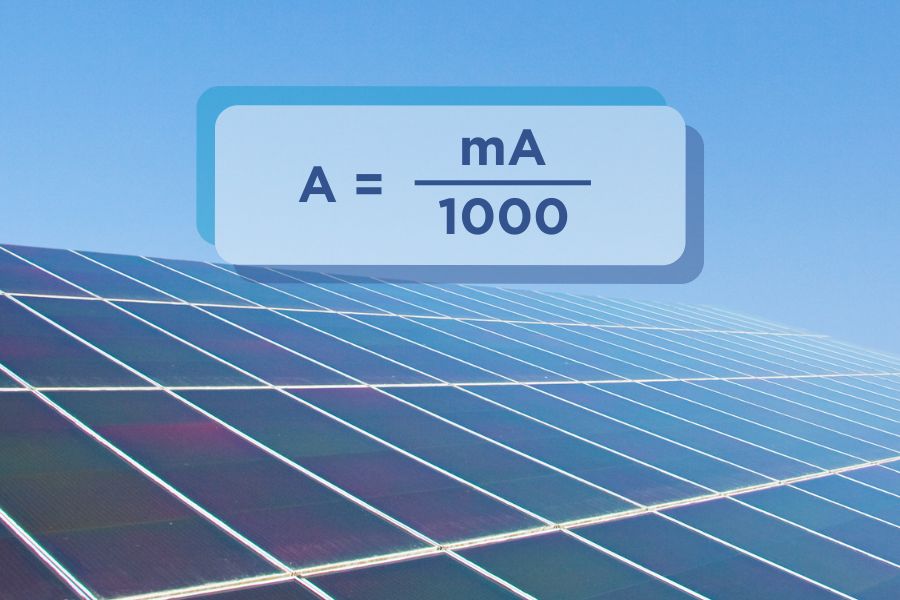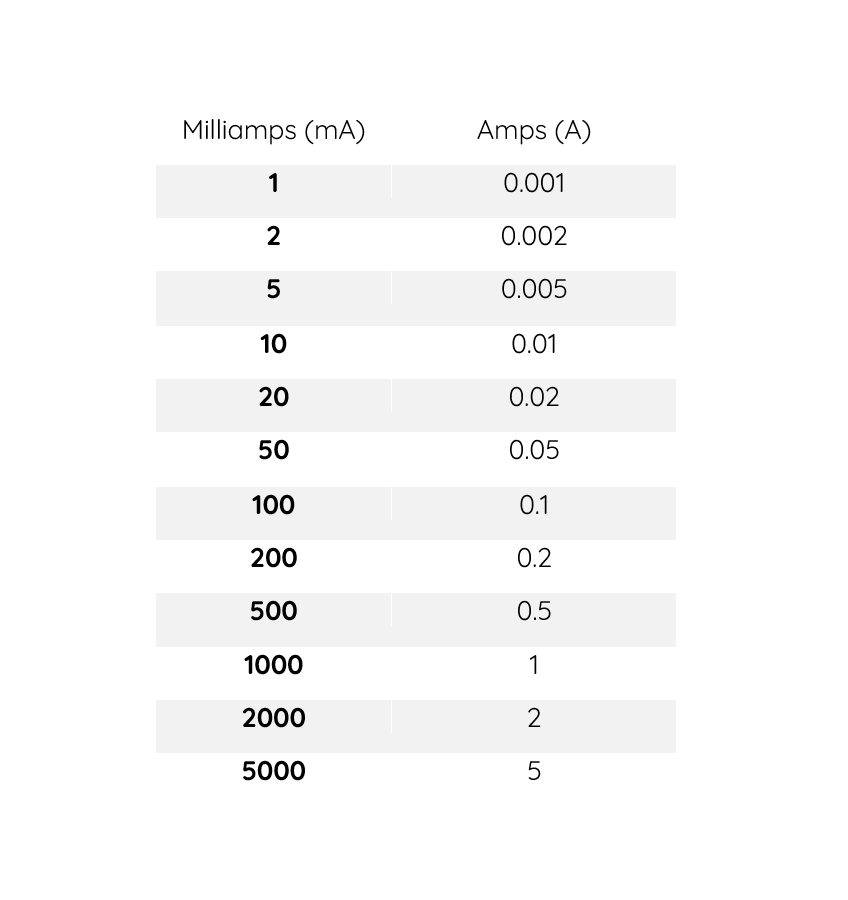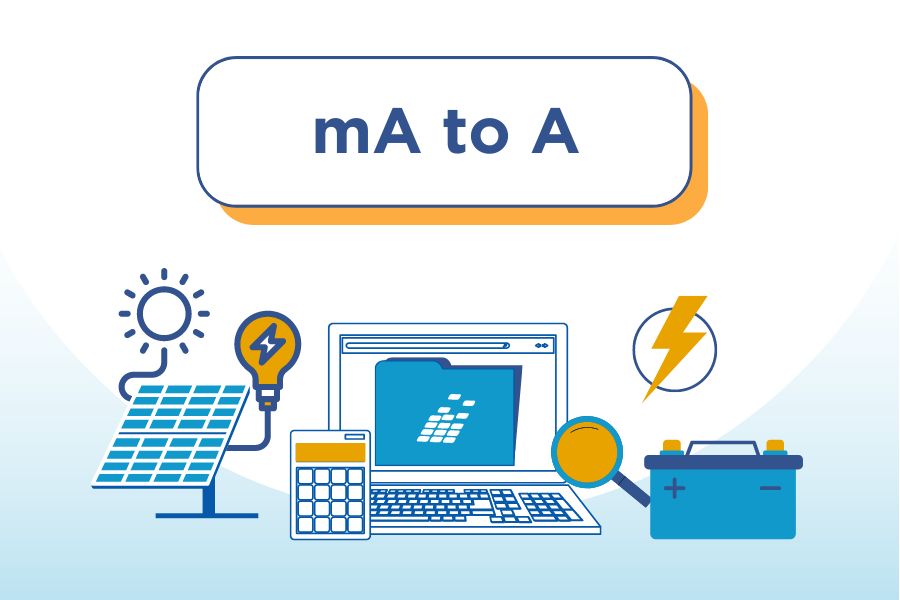mA / 1,000 =
0.00 A
Conversion formula: A = mA / 1,000
What Is a Milliampere?
A milliampere is a thousandth of an ampere (the base unit of electric current). It equals one-thousandth of an ampere or 0.001 coulombs of charge moving through a point per second.
While not the base unit of electrical current, many measuring instruments measure units in milliamps.
What Is an Ampere?
In the international system of units (SI unit), the Ampere is the SI base unit of electric current. It measures how much charge moves through a point in a circuit per unit second. In other words, an ampere measures the rate at which electrical charges move across a point in a circuit.
In the past, Ampere was the constant current at which two straight, infinitely long conductors in parallel would produce a pressure of 0.2 μN/m between themselves. One Ampere is one Coulomb of charge moving through a point per second.
Why Convert Milliamperes to Amperes (mA to A)?
We Convert mA to A for Accuracy in Calculations
When calculating which electric current should be in amps, we convert milliamps to amps. Such calculations involve electric quantities like power, voltage, and resistance.
In such calculations, our results would be inaccurate if we do not convert milliampere to Ampere.
For instance, if we were calculating the size of our solar system rated 48V, 1000 milliamp, and we multiplied voltage and milliamps directly, our result would be a thousand times higher than it should be.
So, to ensure we always get the correct estimate when calculating such quantities, we must convert mA to A.
In the instance cited above, sizing the solar system as 48 x 1000 = 48,000 watts would be inaccurate. But when we convert milliampere to Ampere: 1000/1000 = 1 amp, we can get the correct result: 48 x 1 = 48 watts.
We Convert mA to A When Measuring With Instruments that Report in mA
Some measuring instruments (e.g., ammeter) exclusively measure milliamperes. While others report units exclusively in amperes. When working with an instrument that only reports in milliamps, we must convert mA to A if our desired magnitude is A.
In some cases, however, testing instruments simultaneously measure in amps and milliamps. So, an mA to A conversion wouldn’t be necessary. In fact, some of such instruments can do milliampere to ampere conversions.
How to Convert Milliampere to Ampere (mA to A)

To convert milliamps to amps, all we have to do is multiply the value of milliampere by one thousandth (1/1000) or divide by 1000.
\(A = mA * \displaystyle{\frac{1}{1000}}\)
or
\(A =\displaystyle{\frac{mA}{1000}}\)
While Ampere (A) and milliampere (mA) measure electrical current, their magnitudes of measurement differ. While A measures in multiples of one, mA measures in thousandths (multiples of 1/1000). This is why when we convert milliampere to ampere, we multiply by 1/1000. In reverse, if we want to convert ampere to milliampere, we multiply the ampere value by 1,000.
Generally, when metric prefixes precede amps (A), the metric prefixes indicate the multiplier we need to convert to amps. For mA to A, the m in mA stands for milli, which equals one thousandth. This is why we can convert milliampere to Ampere by multiplying by one thousandth (1/1000).
Example
- To convert 68 mA to A, we can do this: \(68 * \displaystyle{\frac{1}{1000}} = 0.068\ A\)
or this: \(\displaystyle{\frac{68}{1000}} = 0.068\ A\)
- We can also convert 20000 mA to A by doing this: \(20000 * \displaystyle{\frac{1}{1000}} = 20\ A\)
or this: \(\displaystyle{\frac{20000}{1000}} = 20\ A\)
Quick Conversion Chart of Milliamperes to Amperes (mA to A)

Why Use Milliamps Instead of Amps?
Many devices that measure smaller measurements use milliamps instead of amps. They do so because they may miss out on smaller readings if they use amps (which have a higher magnitude).
For instance, if an ammeter’s least count is 1 A, and we try to read a current of 10 mA with it, it may not sense the reading.

